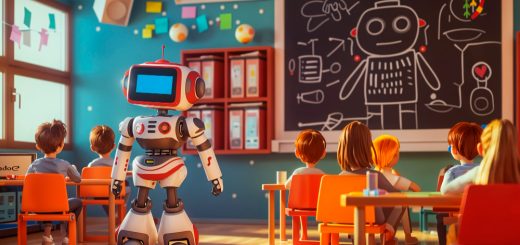7 Hidden Risks of Students Relying on Artificial Intelligence: What Every Educator Should Know
While Artificial Intelligence (AI) offers numerous benefits in education, there are also potential drawbacks that need to be considered, especially when it comes to students using these technologies. Understanding these challenges is crucial to ensuring that AI is used effectively and ethically in educational settings.
1. Overreliance on Technology
One of the most significant drawbacks is the risk of students becoming overly reliant on AI tools. While AI can assist in learning, there’s a danger that students might depend too much on these tools, leading to a decline in critical thinking and problem-solving skills. For example, students might use AI-powered tools like grammar checkers or math solvers without fully understanding the underlying concepts. This dependency can hinder their ability to tackle challenges independently and develop essential skills needed in real-life situations.

2. Lack of Personal Interaction
AI tools, while efficient, lack the personal touch that human teachers provide. Learning is not just about acquiring knowledge; it also involves social interaction, emotional support, and motivation. AI cannot replace the encouragement and mentorship that teachers offer. The absence of these human elements might lead to a more isolated learning experience, which could affect students’ social and emotional development.
3. Privacy and Data Security Concerns
AI tools often require access to large amounts of data to function effectively. This includes personal information, learning patterns, and even behavioral data. There is a growing concern about how this data is stored, used, and who has access to it. If not handled properly, students’ data could be at risk of being misused, leading to privacy breaches. Schools and developers need to ensure that robust data protection measures are in place to safeguard students’ information.
4. Digital Divide and Accessibility Issues
The benefits of AI in education are not equally accessible to all students. There is a digital divide where students from low-income families or remote areas may not have access to the necessary devices or internet connectivity to use AI tools effectively. This can exacerbate existing educational inequalities, leaving some students at a disadvantage. Additionally, not all AI tools are designed with accessibility in mind, which can be a barrier for students with disabilities.
5. Bias in AI Algorithms
AI systems are only as good as the data they are trained on. If the data contains biases, the AI tools may perpetuate those biases, leading to unfair or discriminatory outcomes. For instance, an AI tool used for assessing students’ work might favor certain language styles or cultural references, which could disadvantage students from diverse backgrounds. This raises ethical concerns about the fairness and inclusivity of AI in education.

6. Potential for Academic Dishonesty
AI tools that provide quick answers or generate content could inadvertently encourage academic dishonesty. For example, students might use AI-powered essay generators or problem solvers to complete assignments without putting in the necessary effort. This not only undermines the learning process but also poses challenges for teachers in assessing students’ true capabilities.
7. Decreased Motivation and Engagement
While AI tools can make learning more efficient, they might also lead to decreased motivation and engagement if not used appropriately. If students perceive AI as doing most of the work for them, they may become less inclined to actively participate in the learning process. This can result in a passive learning experience where students miss out on the deeper understanding that comes from grappling with challenging problems.
AI in education has great potential, but it is essential to be mindful of its drawbacks. Overreliance on technology, privacy concerns, and the digital divide are just a few of the challenges that need to be addressed. Educators, parents, and policymakers must work together to ensure that AI is used in a way that enhances learning without compromising students’ development, security, or equity. By carefully balancing the use of AI with traditional educational methods, we can maximize its benefits while minimizing potential risks.


